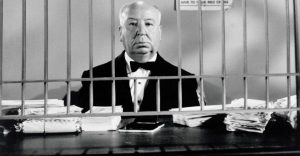D&D: Post Apocalyptic Campaign Ideas

With the enduring popularity of post-apocalyptic games, movies, and other media, there are plenty of ways that such a setting could be incorporated into a post-apocalyptic Dungeons & Dragons campaign. There are several tropes that could be used to add flavor to a game in varying ways. With a DM that is willing to bend some standard details, it would be an easy way to add a new flourish to a campaign.
Post-apocalyptic themes open a variety of new opportunities, both in gameplay and storytelling. Most of these rely on what sort of civilization there was before it came crumbling down, and what remains of it by the time the story begins. Things ranging from the types of settlements the players encounter to the styles of weapons and armor that they find will be affected by the world’s previous history. Similar to what D&D’s Raiders of the Serpent Sea‘s Viking theme brings to the table, a post-apocalyptic setting can create an adventure that feels very different from the norm, and hopefully a memorable one.
There are several excellent starting points for a post-apocalyptic campaign, and a few concepts will be detailed in this article. Of course, they can be edited and adjusted to a DM’s preference or to the other needs of the campaign or party. For a blend of classical fantasy and something new, a post-apocalyptic D&D campaign may be the perfect plan.
Post-Apocalyptic D&D From A Campaign Left Ruined By A Mysterious Magical Malady

Magic is a mainstay of Dungeons & Dragons outside of campaigns that are set in specifically non-magical worlds. Magic is also easily one of the most powerful forces in almost any D&D game world. It doesn’t take much extrapolation to realize that magic could become horrifically dangerous if used improperly, especially considering the existence of a place like Strixhaven, a college for magic-users in D&D. A big enough magical mishap could easily have cataclysmic results, and a campaign could take place as society is just beginning to rebuild.
The type of cataclysm caused by the magic could be used to further flavor the world. If it was an explosion or some other event of mass destruction, then new villages could be set up in the crumbling remains of old cities. If it had been some sort of plague or chemical cataclysm, than many of the past cities may be largely intact, but run down and abandoned, with pools and stains of fluid from the disaster acting as additional obstacles during dungeon crawls. It could even lead to the remnants of the disaster creating new, corrupted monsters to oppose the party. For another twist, the cataclysm could have caused the world to lose its magic, creating an adventure for a nonmagical D&D party as they either move on from the magical world or seek to bring magic back.
The unending potential of magic in the Dungeons & Dragons universe means that this prompt can be customized endlessly for whatever the DM feels would make for the most interesting scenario. Post-apocalyptic stories in low-tech worlds are not explored often, which makes this a unique campaign plot. Exploring this new world would make for an exciting experience.
A Fallout-Style Modern World Campaign Taking A D&D-Style Medieval Turn

The Fallout series is one of the most famous post-apocalyptic franchises in existence. Taking place in a world that reached a variant of 1950s-style life with highly advanced robots and atomic power before the world fell to nuclear fire, it has run for several successful installments. It does raise some ideas for a potential Dungeons & Dragons campaign. Fallout has its own tabletop RPG, but D&D players can still play a campaign where the wrecked remnants of a modern world play host to a magical medieval adventure.
In this campaign, the world would have reached a modern era of technology before the apocalypse, but by the time a new society develops far enough to find it, these mechanisms will be either too rusted and drained of power, or too complicated to be used efficiently in most cases. So instead, they are broken down and used to create traditional D&D weapons and armor, but with a twist. Car parts could be reconfigured into armor. Pencil compasses could be modified into daggers by assassins. Lawnmower blades could become swords. The dilapidated modern elements can also be interwoven into designs to create more unique D&D NPC backstories and encounters. For example, a guard could wear a stop sign as a part of his armor as a nod to his duties.
Buildings could be repurposed to fit the new world of the campaign. For example, a mall could become a community with stores functioning as houses and businesses. An abandoned office building could be a monster-infested dungeon. Surviving engines could be used to power city gates or traps. Pretty much any possible way to turn an average city into a hub of adventure could be explored with this setting. For those who want to experiment with radically different settings from the norm, this may be an adventure of choice.
A Post-Apocalyptic D&D Campaign Can Be A Battlefield Left Behind After A Monster War

One concept for an apocalypse is a world that became the setting of a war between giant monsters of all sorts, terrible beasts even mightier than any of Multiverse of Monsters’ high-level D&D creatures. The battles were so destructive that almost everything was wiped out, and it is only long after the battles have ceased that it would be safe to attempt to bring civilization back to the surface. Almost everything has been reduced to ruin, and the ensuing societies must more or less start anew in this savage, scarred world.
The setting of this campaign would be rugged, with few indications of the old world left. The party would have to do much to provide for themselves in the vast wilderness, hunting and foraging for their own food on their long trips between settlements. The environments would be extreme, from overgrown grasslands to harsh, barren deserts, with the warped ground giving way to caverns that house great danger as well as forgotten riches. The plot provides even further fuel for the DM to create a unique homebrew D&D campaign setting. Each part of the world would be marked by elements of the monsters that dominated it previously. For example, the domain of a fire-breathing monster would have large areas that are complete scorched, while the former home of a bird monster would be dominated by a giant nest atop a mountain.
Creating this would would give ample opportunities to not only create challenges for the player, but also tell the history of the world. An especially damaged area of land could have been the site of a major battle between monsters, or a sprawling crater could be where one of the great beasts fell in combat. A DM could use their descriptions of this ruined world to create a scary horror-themed D&D campaign setting. With such a chance to tell a world’s tale simply through describing scenery, a DM that loves storytelling would thrive with this scenario.
A post-apocalyptic campaign is a great way to try things that wouldn’t be seen in a typical D&D campaign. Yet at the same time, it would fit in naturally enough that it wouldn’t feel like the setting was being forced. After all, exploring lost and forgotten relics of civilization is one of the cornerstones of what Dungeons and Dragons is all about.
About The Author

















